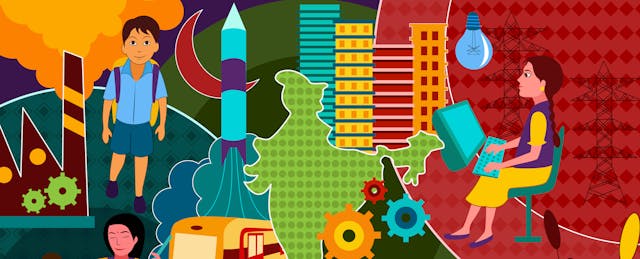When Tulsi Parida joined Newsela in August 2014, she was the 19th employee at the fast-growing New York City-based startup. During her time there, the company tripled in size and she earned a promotion. Last July, however, Parida felt an itch to tackle educational needs in her native country, India. So she packed up and moved to Mumbai, where she found work at Zaya.
“My move to India was driven by my desire to see the impact of technology in education in the Indian context,” Parida says. As Director of Growth at Zaya, Parida is learning how developing edtech for low-income India slums is quite different than working with American schools.
As edtech moves into the developing world, there are new challenges when attempting to reach students in the lowest economic rungs. Never mind the shortage of internet bandwidth and devices; some schools lack even basic school supplies and reliable electricity. Yet these difficulties have not deterred efforts from gritty entrepreneurs to improve educational opportunities through technology.
One of the most high-profile initiatives this century was the “One Laptop Per Child” effort led by MIT professor Nicholas Negroponte. When it launched in 2005, the idea of a $100 laptop for the world’s poorest children captured the backing of Google, eBay and UNDP. Yet the results revealed that devices, by themselves, have a limited impact, at best, on learning outcomes. Two and a half million laptops later, some critics point out the project’s failures with its Western-centric approach and “technologically utopian” vision that hailed technology as the answer to difficult social problems.
Since OLPC and a handful of other projects, the international community has viewed edtech with more skepticism. Some academic researchers have tried to give a guiding hand to the edtech community venturing forward. Stanford doctoral student Molly Zielezinski and Professor Linda Darling-Hammond summarized researched findings about practices that support positive outcomes of technology use for underserved students, such as one-to-one access to devices, high-speed Internet, and the right blend of teachers and technology.
Edtech companies entering low-income countries are noticing some of these challenges and are working towards solutions. At Khan Academy, employees have been focusing their efforts on mobile devices in order to achieve one-to-one for students. Earlier this year, the nonprofit partnered with the Carlos Slim Foundation to make the content free of data charges for mobile users in Mexico. The company also reduced the size of the app and redesigned math exercises to work better on phones. Khan Academy reports that 25 percent of users in Mexico access their content on mobile devices. In India, the rate is 40 percent.
Another factor that also often gets lost amidst the focus on devices is the cultural relevance of the content.
Education technology has to be very well aligned to the specific context in which it is being used, according to Zielezinski. “A cultural approach to learning is one of those places where alignment is key.”
Sandeep Bapna, Country Director of India for Khan Academy, explained his company’s approach. He wrote via email: “We are, in countries like India and Mexico, taking steps towards making Khan Academy content localized as well as curating this content to match local curriculum requirements.”
India-based startups like Zaya may have an edge over U.S. edtech companies when it comes to understanding the needs of the country’s children. “Because we are founded here, the product is designed for the consumer here and all of our thinking is tailored to that,” Parida states.
One of Zaya’s product is the ClassCloud, a server that deploys content to student tablets in a local intranet network, which means it can beam content, including Khan Academy videos, to classrooms with no internet connection.
“Our product is being used in schools around India and we work very closely with teachers to gain insights on this product,” Parida says. “So we already have an understanding of the kinds of resources and constraints that the low income schools here face.”
Zaya is also creating original content through their language learning game, English Duniya, which is focused on helping Indian users learn English through culturally-relevant material. The app is currently available in Hindi and English with plans to add other regional languages soon. Zaya is not stopping at India, either. The startup hopes to bring its low-cost products to other developing countries.
For the edtech companies looking to scale, Zielezinski says that “many want a panacea and one-size fits all approach to education. It may be the gold standard in getting your edtech company to grow, but it is often not the gold standard in getting kids to learn.”


